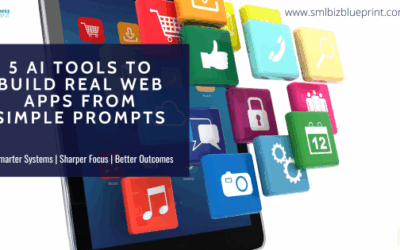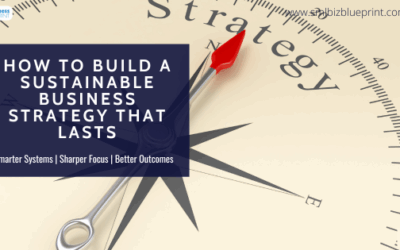Pricing can make or break a business in today’s fast-paced and highly competitive market.
Staying ahead of the curve is essential as customers become more price-sensitive and competitors continuously adjust their strategies.
Competitive pricing analysis is no longer optional—it’s a vital tool for ensuring your business remains profitable while still appealing to your target audience.
According to a McKinsey report, a mere 1% improvement in pricing can increase profits by 8-12%, showcasing the direct impact pricing has on profitability.
To make these gains, businesses must continuously assess market trends, monitor competitor pricing, and adjust their strategies dynamically to maintain an edge.
In this post, we’ll explore the art of competitive pricing, diving deep into data-driven pricing adjustments, dynamic pricing strategies, and how to avoid price wars while maintaining profitability.
By following these insights, you’ll be better equipped to refine your pricing strategy, boost profitability, and outmaneuver the competition.

#1 What Is Competitive Pricing Analysis and Why Does It Matter for Your Business?
Competitive pricing analysis involves evaluating your competitors’ pricing strategies, market trends, and customer expectations to position your pricing effectively in the market.
In today’s fast-moving business landscape, it’s essential to understand how your prices compare with others in your industry to avoid being undercut and ensure you remain competitive without sacrificing your profit margins.
Gathering accurate, real-time data on your competitors’ prices is the foundation of a strong competitive pricing strategy. This can involve manually checking competitor websites, using pricing monitoring tools, or conducting customer surveys.
Once you have this data, it’s crucial to analyse it within the context of your own costs, target audience, and brand positioning.
Why is this important? A well-executed pricing analysis ensures you’re not pricing yourself out of the market while avoiding the “race to the bottom,” where constant price cuts erode profits.
Instead, competitive pricing analysis helps you find the sweet spot—where you can charge a fair price that appeals to customers and keeps you profitable.
Moreover, competitive pricing gives your business a tactical edge. It allows you to identify gaps in the market, areas where your competitors are over- or underpricing, and opportunities to offer additional value.
For instance, you might find that your competitors charge less but offer fewer features or services, allowing you to justify a higher price through product differentiation.
According to a Harvard Business Review study, companies that consistently review and optimise their pricing can see profit increases of up to 30% compared to those that don’t.
This highlights the significant impact of competitive pricing analysis on your bottom line.
#2 The Importance of Data-Driven Pricing Adjustments
In today’s data-driven world, pricing adjustments based on gut instinct alone can be risky.
Data-driven pricing adjustments allow businesses to respond to market shifts, consumer behaviour, and competitor pricing in real time, ensuring their pricing remains competitive and profitable.
Using data helps eliminate guesswork and allows you to fine-tune your prices to reflect real-world conditions more accurately.
Leveraging the right tools and analytics is key to successful data-driven pricing. Real-time data from sales, competitor tracking tools, and even customer feedback can help you better understand how different pricing strategies impact your bottom line.
For example, pricing intelligence software like Prisync or Competera provides insights into competitor pricing changes, helping you stay ahead without manually monitoring competitors.
Why is this important? Data-driven pricing is compelling because it allows businesses to adapt to changing conditions instantly.
If competitor prices drop, you can make an informed decision on whether or not to follow suit based on how your customers respond to those changes. Additionally, data can reveal valuable insights into how customers perceive your prices, helping you optimise for both conversion rates and profitability.
Furthermore, integrating customer data into your pricing strategy is crucial.
Monitoring customer behaviour through tools like Google Analytics can help you identify price sensitivity and understand what price points lead to higher conversion rates. It also gives you visibility into when pricing adjustments are necessary—for instance, if you notice a spike in cart abandonment rates after a price increase, that may signal the need for re-evaluation.
According to a McKinsey report, companies adopting data-driven pricing practices see their margins increase by 2-5%.
This demonstrates the tangible benefits of using real-time data and analytics to refine your pricing strategy and remain competitive.
#3 How to Track Competitors’ Prices Without Breaking the Bank
One of the biggest challenges businesses face in adjusting their pricing strategy is keeping up with competitors’ prices without exhausting resources.
Tracking competitor prices is crucial for ensuring your pricing remains competitive while aligning with your business objectives. Fortunately, several affordable and efficient tools are available to help small and medium-sized businesses track competitor pricing without needing large, expensive systems.
Tools like Prisync, Competera, and Price2Spy offer real-time pricing insights from competitors, helping you monitor market fluctuations and adjust your pricing accordingly.
These platforms automate the process of price tracking, so you don’t have to spend hours manually checking your competitors’ websites. Many of these tools also provide features like price change alerts, historical data analysis, and recommendations for optimal pricing adjustments based on market trends.
If you’re on a tighter budget, several low-cost or free alternatives can still be just as effective.
For example, browser extensions like Keepa (for Amazon) can help track price history, while Google Alerts can notify you whenever a competitor’s product or service pricing changes online.
Even manual tracking through competitor websites can yield insights, especially when combined with customer feedback.
Why is this important? Consistently tracking competitor pricing gives your business the flexibility to respond quickly to market changes.
If a competitor drops their prices, you can decide whether to match or focus on differentiating your offerings based on added value. This ability to pivot quickly can differentiate between losing or winning over a price-sensitive customer base.
Moreover, tracking competitor pricing provides insights into market trends and consumer expectations. If you notice multiple competitors adjusting their prices simultaneously, it may indicate shifts in demand or seasonal trends that you can capitalise on.
A study by PwC found that 82% of consumers check prices online before purchasing, highlighting the importance of staying competitive.
Using affordable pricing tools and staying informed about your competitors’ moves can help you make pricing decisions that keep your business relevant and profitable.

#4 Strategies for Maintaining Profitability in a Competitive Landscape
Businesses often feel pressured to lower prices to match or undercut competitors in highly competitive markets. While this might seem like a quick fix to attract more customers, it can easily lead to a price war, which can be detrimental to long-term profitability.
Price wars often result in reduced margins, and businesses caught in this cycle may find themselves unable to sustain operations in the long run.
That’s why it’s crucial to avoid engaging in price wars and instead focus on strategies that allow you to maintain profitability while remaining competitive.
One of the most effective strategies for avoiding price wars is to differentiate your product or service by emphasising value over cost.
Customers are not always looking for the lowest price; they often seek products and services that provide the best overall value. This can include superior customer service, higher-quality materials, faster delivery times, or exclusive features your competitors may not offer.
For instance, Apple has maintained premium pricing for years by focusing on the perceived value of its design, ecosystem, and brand reputation despite cheaper alternatives in the market.
Another approach is to adopt a value-based pricing strategy, where prices are set according to the perceived value of the product or service rather than market rates or costs.
This method allows you to charge higher prices by focusing on the benefits and outcomes your customers will receive. Instead of engaging in a price-cutting race, emphasise how your product solves specific problems better than your competitors.
For example, Zappos differentiated itself from other online retailers by offering superior customer service, such as free returns, which justified its higher prices.
Why is this important? Engaging in price wars can significantly reduce your profit margins and harm your brand image in the long term.
By delivering value through product differentiation, businesses can create loyal customer bases willing to pay more for quality and service, reducing the need to compete on price alone.
Price wars erode profits and damage customer relationships. Customers may begin to expect constant discounts, making it difficult to return to regular pricing. Instead, businesses should look to add value through enhanced service offerings, bundled products, or loyalty programs.
A Harvard Business Review study found that businesses in price wars see a 30% reduction in profitability, underscoring the importance of avoiding this pitfall.
By focusing on value, differentiation, and long-term customer relationships, businesses can maintain healthy margins without succumbing to the pressures of aggressive price competition.
#5 Dynamic Pricing Strategies to Stay Competitive in a Saturated Market
Staying competitive in a crowded market often requires adopting flexible and innovative approaches to pricing.
Dynamic pricing is one strategy that enables businesses to adjust prices based on real-time factors such as demand, competition, and market conditions.
This method has been widely adopted by industries like travel, hospitality, and e-commerce, where prices fluctuate depending on customer behaviour, availability, and time.
Dynamic pricing strategies allow businesses to optimise their pricing by reacting quickly to changes in the market.
For instance, e-commerce giant Amazon is known for adjusting its prices multiple times a day based on a combination of algorithms that consider competitor pricing, customer demand, and product availability.
This pricing flexibility allows businesses to maximise sales during peak demand periods while maintaining profitability.
There are several types of dynamic pricing strategies that businesses can adopt:
Time-based pricing: Prices vary based on the time of day, week, or season. For example, travel and hospitality services prices often increase during holiday seasons or weekends when demand is higher.
Demand-based pricing: Prices adjust according to demand levels. This is commonly seen in ridesharing services like Uber, where surge pricing is implemented during peak demand to balance supply and demand.
Segmented pricing: Different customer segments are charged different prices based on factors like location, purchasing behaviour, or loyalty status. Retailers, for example, might offer discounts to loyal customers or those with specific membership tiers.
Why is this important? Dynamic pricing helps businesses stay agile and responsive to market changes in a saturated market.
It ensures that prices remain competitive when demand drops while capitalising on opportunities to increase revenue when demand rises.
This adaptability gives businesses an advantage over competitors who rely on static pricing models that do not account for real-time changes.
Dynamic pricing is particularly valuable for industries with fluctuating demand, such as retail, transportation, and hospitality. By adjusting prices in real-time, businesses can increase sales during peak periods and offload excess inventory during slower periods without relying solely on discounts.
According to Deloitte, companies that implement dynamic pricing strategies experience a 10-15% increase in profitability compared to those that use static pricing. This demonstrates the power of pricing agility in driving revenue and maintaining competitiveness in saturated markets.
#6 Balancing Competitive Pricing and Brand Value
When adjusting pricing strategies, many businesses fall into the trap of believing that the lowest price always wins.
However, not all customers are driven purely by price—many prioritise brand value, quality, and a business’s overall experience.
Focusing solely on competitive pricing can undermine the perceived value of your brand and hurt long-term profitability.
For businesses looking to differentiate themselves, balancing competitive pricing with brand value is crucial for maintaining both customer loyalty and healthy margins.
Brand value encompasses more than just the product or service you sell; it includes customer experience, product quality, reliability, and customers’ emotional connection with your brand.
Companies like Apple and Tesla are excellent examples of businesses prioritising brand value over competing on price alone. Both brands command premium pricing by focusing on innovation, superior customer service, and delivering a unique brand experience, allowing them to charge more while maintaining strong customer demand.
One way to balance competitive pricing and brand value is to emphasise product differentiation. This means highlighting the unique aspects of your product or service that justify a higher price point, such as enhanced features, higher-quality materials, or exclusive benefits.
For example, Patagonia charges premium prices for its products by emphasising sustainability, durability, and ethical manufacturing practices—qualities that resonate deeply with its target audience and justify the cost.
Another approach is to provide value-added services that complement your product offerings, helping justify a higher price without engaging in price wars. These services could include faster delivery, extended warranties, loyalty programs, or exceptional customer support.
By providing more value through service and experience, customers are often willing to pay more, perceiving the total package as worth the extra cost.
Why is this important? Focusing on brand value rather than just competing on price allows businesses to attract customers who are less price-sensitive and more loyal in the long term.
These customers are often willing to pay a premium for products that align with their values, deliver superior quality, or offer additional benefits beyond just the base product. This helps businesses avoid the pitfalls of price wars and maintain stronger margins over time.
A PwC study found that 86% of buyers are willing to pay more for a great customer experience, highlighting the importance of delivering value beyond the price tag.
This shows that businesses prioritising brand value alongside competitive pricing can win over customers prioritising quality, service, and experience over low costs.

#7 Analyzing the Impact of Pricing Adjustments on Customer Behaviour
Understanding how your pricing decisions influence customer behaviour is essential for creating a sustainable and competitive pricing strategy.
Every pricing adjustment—whether a discount, price increase or promotional offer—affects how customers perceive your product and whether they decide to buy.
Analysing customer behaviour in response to pricing changes can help you fine-tune your pricing strategy to maximise sales and profitability.
One of the most effective ways to analyse the impact of pricing on customer behaviour is through data tracking tools such as Google Analytics, Hotjar, or your e-commerce platform’s analytics. These tools help you monitor key metrics like conversion, cart abandonment, and bounce rates.
For example, if you notice a sharp decline in conversions after a price increase, it may indicate that the new price point is too high for your target audience, signalling the need for further adjustments.
Customer feedback also plays a critical role in understanding the impact of pricing adjustments. Surveys, reviews, and social media comments can provide valuable insights into how customers perceive your pricing.
Are they satisfied with the value they’re receiving, or do they feel the product is overpriced compared to alternatives?
Actively listening to customer feedback helps you make more informed decisions about when and how to adjust pricing.
In addition to tracking conversion metrics and customer feedback, businesses can conduct A/B testing to experiment with different pricing models and determine which yields the best results.
For example, testing various price points for a product or service can help you identify the price at which customers are most likely to convert.
You can find the sweet spot where price, customer behaviour, and profitability align by continually testing and refining.
Why is this important? Regularly analysing the impact of pricing adjustments allows you to identify trends in customer behaviour and respond to them quickly.
Whether reducing prices to boost sales volume or increasing prices to capture more value from premium buyers, understanding how your pricing changes affect your customers is key to staying competitive.
For example, Salesforce found that companies that consistently use customer data to inform pricing decisions see a 1.5x increase in conversion rates. This demonstrates the significant role of data analysis and customer feedback in creating effective pricing strategies.
#8 Best Practices for Continuous Price Optimization
Businesses must adjust their pricing strategies and optimise prices to stay competitive in a constantly evolving market. Pricing isn’t a “set it and forget it” process—it requires ongoing monitoring, analysis, and adjustments based on market trends, consumer behaviour, and competitor actions.
Continuous price optimisation is regularly reviewing and refining prices to maximise profitability while remaining competitive.
The first step in price optimisation is implementing regular pricing reviews. This involves analysing sales data, monitoring competitor pricing, and assessing market trends to identify when adjustments need to be made.
For instance, if competitors have lowered their prices or if consumer demand has shifted, a price review can help determine whether you should follow suit or differentiate your product through added value.
One key tactic is A/B testing, where businesses experiment with different price points to evaluate which price performs better regarding conversions, sales volume, and profitability.
By comparing the results of different pricing models, businesses can identify the price that maximises revenue without sacrificing customer satisfaction. A/B testing can be beneficial during seasonal sales or product launches, where minor price adjustments can significantly impact overall performance.
Another best practice is using price optimisation software, such as ProfitWell or Dynamic Pricing by Prisync, which automates the process of analysing pricing data and recommending price adjustments.
These tools factor in customer demand, competitor pricing, and seasonal trends, allowing businesses to quickly make informed, data-driven decisions.
They help businesses respond dynamically to changes in the market, keeping prices competitive while ensuring profitability.
Why is this important? Continuous price optimisation enables businesses to react quickly to market changes, improving their ability to stay competitive while protecting margins.
It also ensures that businesses make data-backed decisions rather than relying on guesswork, which can lead to pricing errors that negatively impact revenue and customer loyalty.
For example, a study by Statista found that 79% of companies that use ongoing price optimisation report improved profitability and greater market share.
This demonstrates the value of maintaining an adaptive pricing strategy that evolves with market conditions.
Conclusion
Mastering competitive pricing is crucial for business success in today’s dynamic market. By understanding your competitors, making data-driven pricing adjustments, and leveraging dynamic and value-based strategies, you can stay ahead without sacrificing profitability.
It’s not just about having the lowest price—it’s about balancing competitive pricing with brand value, product differentiation, and customer satisfaction.
We’ve explored the key steps in refining your pricing strategy, including analysing customer behaviour, avoiding price wars, and implementing continuous price optimisation to remain agile in a constantly changing landscape.
Whether tracking competitors’ prices, adjusting based on real-time data, or testing new price points, each tactic will help you stay competitive and boost profitability.
Ready to take your pricing strategy to the next level?
Start by analysing your current pricing model and applying these strategies to ensure your business stays competitive.
Use data and tools to make informed decisions, avoid unnecessary price cuts, and focus on delivering value that keeps your customers loyal and satisfied.
FAQs
Q1: What is competitive pricing analysis, and why is it important?
A1: Competitive pricing analysis involves evaluating your competitors’ prices to position your pricing effectively. It helps businesses stay competitive by ensuring their prices align with market trends, customer expectations, and business goals. This analysis is crucial for maintaining profitability without being undercut by competitors.
Q2: How can I track competitor prices without spending too much?
A2: Many affordable tools, such as Prisync, Competera, and Price2Spy, offer real-time insights into competitor pricing. These tools automate the process, helping you stay updated on market changes without manual tracking. Free options like Google Alerts or browser extensions like Keepa are also helpful alternatives.
Q3: What is dynamic pricing, and how does it help businesses?
A3: Dynamic pricing is a strategy in which prices fluctuate based on demand, competition, and market conditions. It allows businesses to adjust prices in real-time to capitalise on high-demand periods or reduce inventory during slow periods. This approach helps companies maximise revenue and stay competitive in fast-moving markets.
Q4: How can I avoid price wars with competitors?
A4: The key to avoiding price wars is focusing on value-based pricing and product differentiation. Rather than lowering your prices to match competitors, emphasise your products or services’ unique value, such as superior quality, customer service, or additional features. This allows you to maintain healthy profit margins without engaging in destructive price competition.
Q5: How can I analyse the impact of pricing adjustments on customer behaviour?
A5: Tools like Google Analytics, Hotjar, and customer feedback surveys can help you track key metrics such as conversion rates, cart abandonment rates, and customer satisfaction after pricing adjustments. Monitoring these metrics will give you valuable insights into how pricing changes influence purchasing decisions, allowing you to fine-tune your strategy.
Q6: What are the benefits of continuous price optimisation?
A6: Continuous price optimisation allows businesses to respond quickly to market changes, ensuring their prices remain competitive and profitable. Regularly reviewing and adjusting prices based on sales data, competitor pricing, and market trends helps businesses improve profitability and maintain customer loyalty. Companies that practice continuous price optimisation often see increased profitability and market share.
Q7: How does focusing on brand value help justify higher prices?
A7: Focusing on brand value—such as offering premium customer service, high-quality products, or unique features—helps justify higher prices by appealing to customers who prioritize quality and experience over cost. Businesses like Apple and Tesla successfully maintain premium pricing by emphasizing brand value, building strong customer loyalty, and avoiding the need to compete solely on price.
Other Articles
Why Your Leads Aren’t Converting and How to Fix It Fast
10 Proven Customer Retention Strategies for Small Businesses




